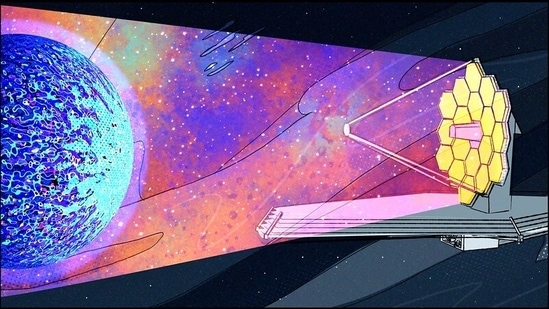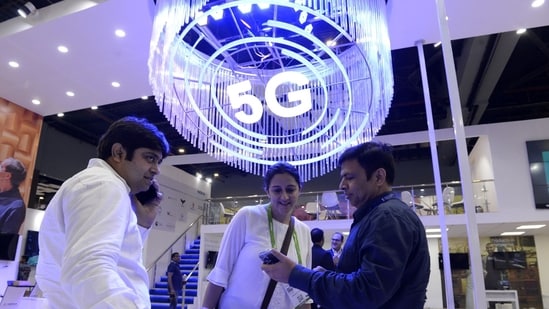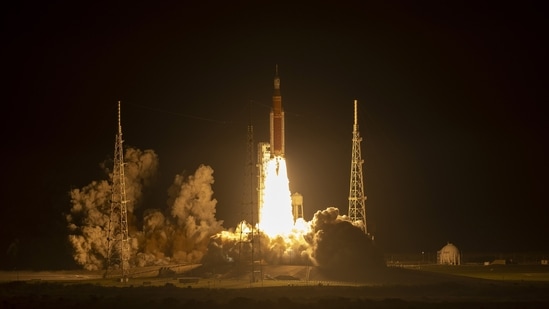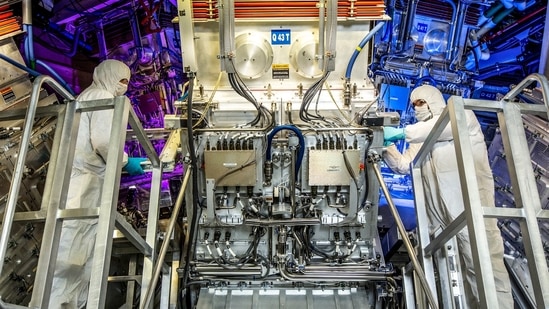As we wave farewell to 2022, the world has witnessed many new scientific and technological achievements in the last 12 months. While the world struggled to recover from the pandemic, another cloud of danger in the form of the Russia-Ukraine war loomed over our heads, scientists and tech innovators continued to work hard to make our lives a little better than the previous year.
In this year-ender, we have selected five defining moments in science and technology in 2022. These events not only alter our perceptions and understanding of the world, but they will also have a long-term impact on our lives in the coming years.

James Webb Space Telescope: Window to the early universe
The year 2022 began on a high note, with the world anticipating the James Webb Space Telescope (JWST) to 1.5 million kilometres from Earth, which it did, and started delivering a never-seen-before view of our universe.
Using the powerful optics system of the James Webb Space Telescope (JWST), scientists have been able to take direct pictures of a planet beyond our solar system. It fascinated us with the image of a star duo—known as Wolf-Rayet 140, forming ‘Fingerprint’ in space and another picture presented the ‘Pillars of Creations’.

5G in India
India saw the beginning of a new era of telecom services with the launch of 5G technology. On October 2, Prime Minister Narendra Modi officially announced the rollout.
The 5G technology promises a very low latency of nearly 5 milliseconds, while 4G latency ranges from 30 ms to 100 ms. Where 4G’s download speeds hit 1 Gbps, the goal of 5G is to increase that tenfold to a maximum download speed of 10 Gbps. With high speeds, superior reliability and negligible latency, it has the potential to revamp the mobile connectivity ecosystem totally.
The 5G services are expected to have a pan-India presence over the next couple of years. Jio assures to do that by December 2023 and Bharti Airtel by March 2024.

New innings: Artemis mission blasts off to Moon
The National Aeronautics and Space Administration (Nasa) successfully launched the first space flight of the Artemis moon mission, entering the next session of the planet’s exploration. The last crewed mission to the Moon was the 12-day Apollo 17 mission between December 7 and 19 in 1972.
The Artemis 1 mission, a test flight without astronauts, represents the first step in the US space agency’s plan to build a lasting presence on the Moon and take lessons from there to prepare for a future voyage to Mars in the 2030s.
In 2024, Artemis 2 will conduct a Moon flyby with astronauts. Boots on the ground would happen during Artemis 3, no sooner than 2025, with the crew including the first woman and person of colour on the Moon.

Musk becomes Twitter’s chief twit
“Let the good times roll,” tweeted Elon Musk, the world’s second-richest man and CEO of Tesla and SpaceX, after completing the $44 billion takeover of Twitter in late October after months of back-and-forth negotiations.
Since then, helming the top post, Musk has started radical changes in the social media behemoth. From massive lay-offs to monthly subscription charges for premium services, some changes have got appreciation, many received heavy backlash from netizens.
The self-declared free speech absolutist declared a general amnesty for suspended Twitter accounts, unbanned Donald Trump’s account, and banned rapper Kanye West’s account. These all ensured that the most viral subject on Twitter remained Twitter itself.
Despite Elon Musk’s announcement that he will follow the Twitter poll that asked him to step down from the platform’s top position, 2023 will still be a year of plot twists.

Breakthrough in nuclear fusion energy
Scientists at the National Ignition Facility at the Lawrence Livermore National Laboratory (LLNL) in California on Tuesday revealed that they have achieved fusion ignition, which means the fusion procedure produced more energy than it consumed. From an input of 2.05 megajoules, it released over 50 per cent energy – 3.15 megajoules.
The achievement can be compared with the breakthrough of the Wright Brothers in 1903, but there lies a huge challenge that can be equated to the launch of Boeing 747 jetliner 66 years later. There is a long path before getting any significant use case of this successful experiment.
